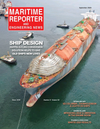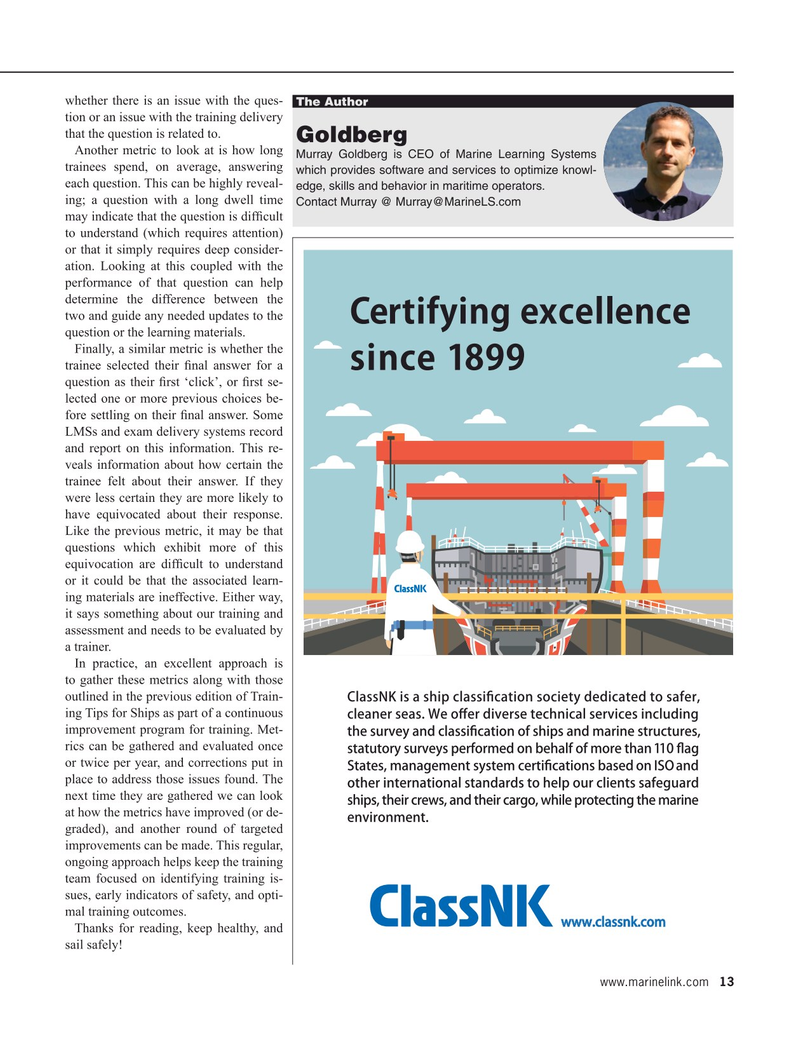
Page 13: of Maritime Reporter Magazine (September 2020)
Marine Design Annual
Read this page in Pdf, Flash or Html5 edition of September 2020 Maritime Reporter Magazine
whether there is an issue with the ques-
The Author tion or an issue with the training delivery that the question is related to.
Goldberg
Another metric to look at is how long
Murray Goldberg is CEO of Marine Learning Systems trainees spend, on average, answering which provides software and services to optimize knowl- each question. This can be highly reveal- edge, skills and behavior in maritime operators. ing; a question with a long dwell time
Contact Murray @ [email protected] may indicate that the question is dif? cult to understand (which requires attention) or that it simply requires deep consider- ation. Looking at this coupled with the performance of that question can help determine the difference between the two and guide any needed updates to the question or the learning materials.
Finally, a similar metric is whether the trainee selected their ? nal answer for a question as their ? rst ‘click’, or ? rst se- lected one or more previous choices be- fore settling on their ? nal answer. Some
LMSs and exam delivery systems record and report on this information. This re- veals information about how certain the trainee felt about their answer. If they were less certain they are more likely to have equivocated about their response.
Like the previous metric, it may be that questions which exhibit more of this equivocation are dif? cult to understand or it could be that the associated learn- ing materials are ineffective. Either way, it says something about our training and assessment and needs to be evaluated by a trainer.
In practice, an excellent approach is to gather these metrics along with those outlined in the previous edition of Train- ing Tips for Ships as part of a continuous improvement program for training. Met- rics can be gathered and evaluated once or twice per year, and corrections put in place to address those issues found. The next time they are gathered we can look at how the metrics have improved (or de- graded), and another round of targeted improvements can be made. This regular, ongoing approach helps keep the training team focused on identifying training is- sues, early indicators of safety, and opti- mal training outcomes.
Thanks for reading, keep healthy, and sail safely!
www.marinelink.com 13
MR #9 (1-17).indd 13 9/9/2020 7:42:40 AM

 12
12

 14
14
